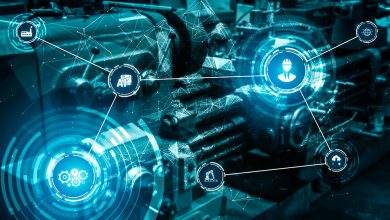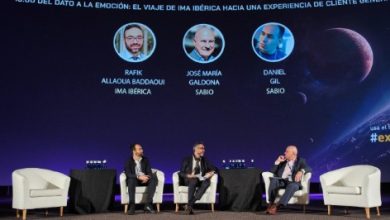
The effects of Brexit and the pandemic on supply chains has been dramatic with a skills shortage identified across the board, and a knock-on effect of stock levels being at there lowest since 1983. The CBI has recently spoken out about labour supply problems that could last for up to two years and which will not be solved by the end of the Job Retention Scheme or furlough.
Waiting for shortages to resolve is not an option if we want to keep the economy going. But there are ways of improving the situation even in the short term by creating operational efficiencies. Intelligent automation (IA) can play a huge role in helping supply chains manage the labour shortage by automating multiple processes thereby reducing the need for employees to do repetitive manual tasks. They are then free to focus on more strategic tasks and take up the roles that need human interaction or retrain to meet skills shortages in other areas.
There are many processes in the supply chain that can be automated using IA. Not only does it eliminate errors associated with manual input, but IA speeds up data-driven processes and decreases inefficiencies and is available 24/7 across the whole supply chain. It ensures delivery on time and improves compliance at the same time.
Inventory management
Managing inventory to ensure optimal volumes while tracking data can be an extremely complex task. IA can help by continually monitoring inventory levels and alerting you to when orders are low. Thus, you know when to make new orders and IA can place the order at the right time. IA also helps with inventory tracking as it goes through the warehouse. It takes away the need for manual tracking on hundreds of thousands of items as they move through the supply chain and removes errors. By deploying software robots to track inventory as it moves from receiving to shelves to production to shipping the whole inventory management process becomes cleaner and more efficient.
For example, Electrocomponents plc* is a British-based distributor of industrial goods and electronics. The company created a robot, using the UiPath Enterprise RPA Platform that processes and updates the inventory codes for all products within its ERP system. With up to 30,000 different inventory code changes per request, the fast and accurate updating of data is essential. Automating this single process has increased the accuracy of data and cut the lead-time for inventory management by 50%.
Supply and demand forecasting and planning
The efficiency of a supply chain depends on the ability to analyse and forecast future inventory needs. Traditionally this has revolved around complex records and data sets, such as historical sales data, market indicators, and custom orders. Finding the data manually from within the company and from vendors and customers is hugely time consuming, but IA can change this by retrieving data and then analysing it automatically. By creating models to a set of predefined rules, IA will analyse customer purchasing trends in large sets of data and help improve forecasting based on those.
Warehouse management
Many errors can occur during manual warehouse management including wrong picking of items but with IA these errors are reduced. When combined with other robotic sorting equipment IA can be integrated with warehouse management systems to further reduce inventory errors while increasing overall productivity. This automation requires validation of an item’s ID and quantity, but when combined with machine learning can be used with the warehouse management systems to flag when data entered is outside the normal range based on specific history. Robotics and IA help improve the accuracy and productivity in the replenishment and picking processes.
Purchase order management
Having to manually review every order can be very time consuming and lead to bottlenecks. With IA you can run purchase orders through automated criteria such as pricing, quantity, and regularity of purchase to check they are correct. When an approval matches the specified criteria, it gets sent through. When it doesn’t, IA uses notifications to run the remaining purchase orders through procurement managers for a formal review. By using automated approval workflows, IA allows you to spend time reviewing only those orders that appear incorrect or which are more important to you.
Freight management
Freight management is time-critical, and IA brings efficiency to the tasks needed to manage it. IA works 24/7, providing an efficient and scalable freight management workflow. It does this by handling tasks such as transferring information during load matching and making it easier for brokers to match a load with a transport carrier. We are also now seeing IA being used to optimise routes, as well as in freight accounting, and freight claim management. For example, in route management, IA interprets and incorporates up-to-date traffic information into local systems. With this, the software traces the most suitable routes for the delivery of goods and corrects the driver’s itinerary in real-time in case of incidents.
Returns and refunds processing
An important aspect of any supply chain is the ability to process returns and refunds quickly to keep customers happy. Where returns and refunds are high, like in the fashion industry, relying on human intervention in these processes slows the whole chain down. By using rules-based task automation, IA can reduce the need for human intervention and free up customer service staff to spend time on those cases that require human intervention.
Invoice management
Managing invoices is a key element of any supply chain. Manually tracking and entering invoice data is time-consuming so it’s a good process to automate. IA makes it easier to process invoice documents from vendors and suppliers and removes errors. IA can extract information from documents and emails, and this can then be used to validate and verify information so that invoices can be paid or created appropriately. By using a network platform to connect the enterprise supply chain to suppliers and financial institutions and then adding IA you can achieve automated, touchless invoice processing.
Founded in 1846, Bristol Water* supplies 266 million litres of drinking water daily to over 1.2 million customers in an area centred on Bristol. The first automation helped with processing business invoices. There were initially around six retailers and it took about nine hours to process the related invoices each month. Using a bot enabled them to cut the time to 2-3 hours a month which crucially offered resilience. There are now approximately 20 retailers, yet IA handles everything without any increase to those two to three hours of manual effort. It has allowed Bristol Water to scale without additional cost.
Compliance
By moving to a network solution that incorporates IA, companies can automate compliance tasks thereby reducing time and manual errors. For example, typical international transactions require scores of documents across many parties and compliance with hundreds of regulations. The sheer volume of work is massive, so systematically digitalising these processes and adding IA to them increases the ability to handle large amounts of data and improves profitability through delivering on-time.
The intelligent automation of routine processes is an opportunity for your most valuable resource – your employees, to focus on improved customer service and other longer-term business goals. It also has a clear role to play in alleviating the skills shortage in supply chains and those companies that embrace it will find they are better able to compete.




